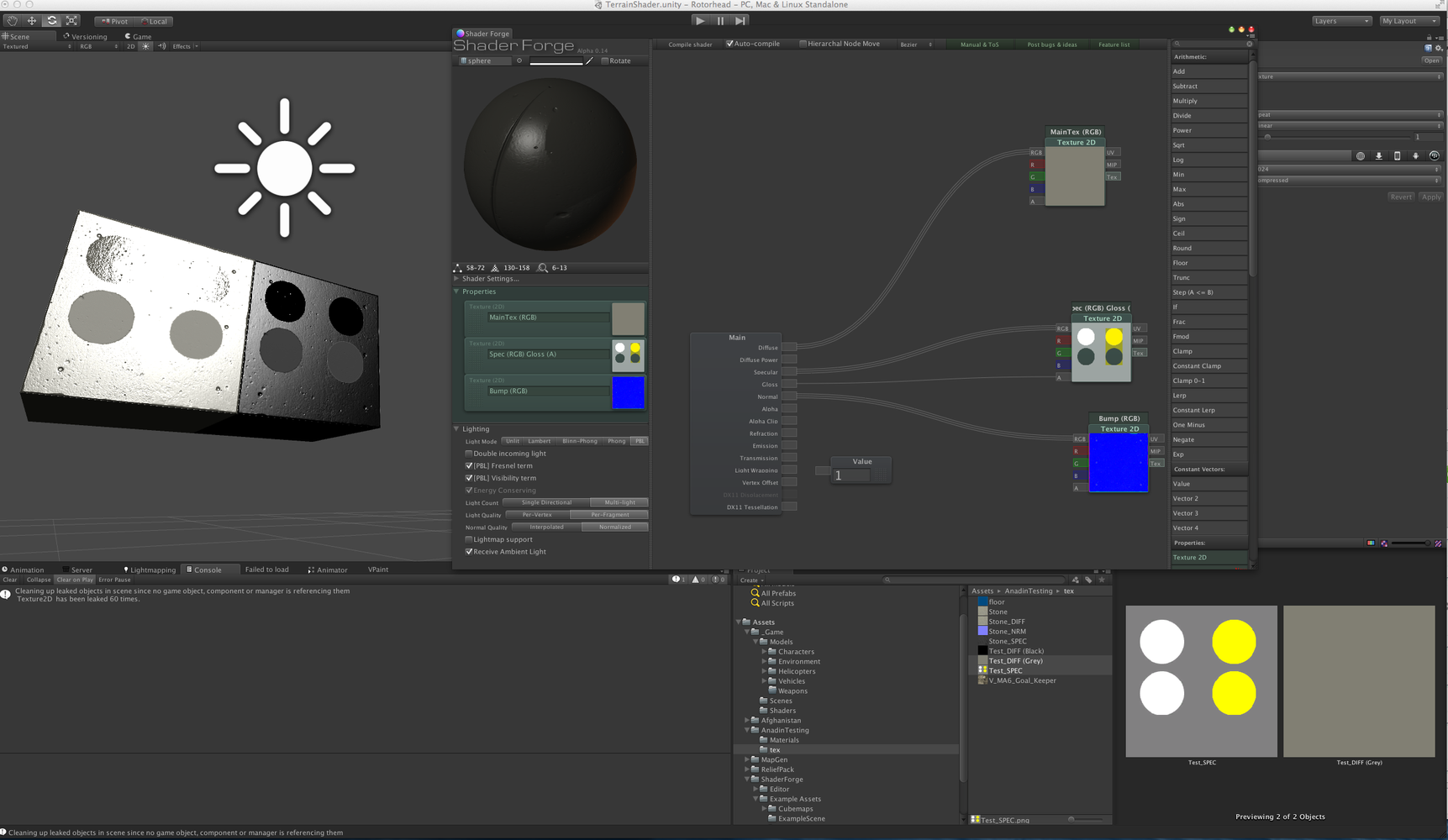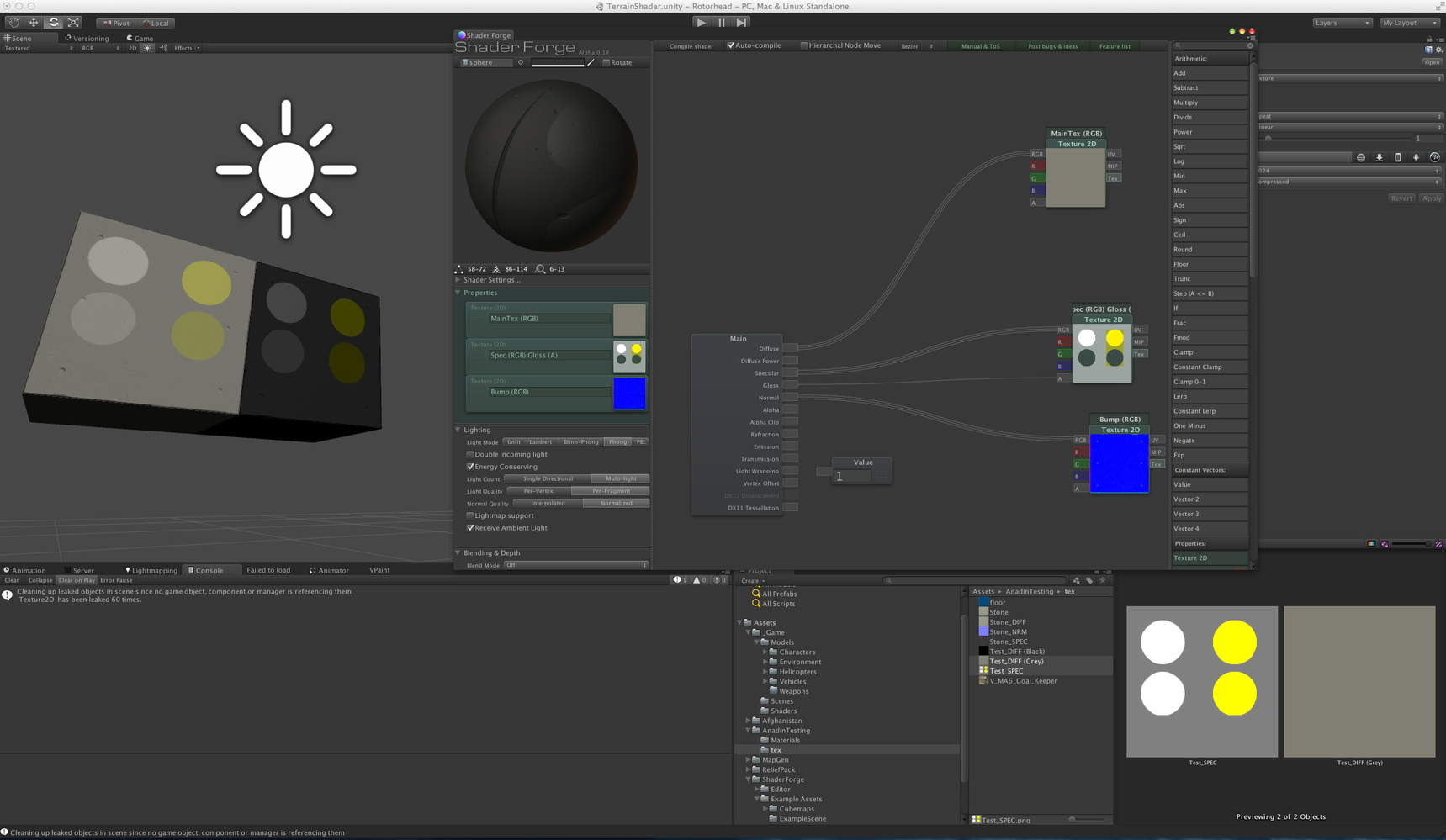
Examples for PBL/Energy Conservation
is there any advice on using the Energy Conservation tick box vs PBL and roughly what the tick boxes mean in real use?
For example I was planning on putting RGB Specular channel in Specular and a grey scale map in the Gloss (for roughness) is that how it should work, or is it a constant in the gloss etc.?
The Fresnel tick box - is that for reflections only? etc. etc.
Thanks!
Answer

OK, done some more homework :P
I get fresnel and visibility terms in the PBL mode but still have a question about conservation..
In both PBL and Conservetion I would still expect to be be able to do RGB on the Specular and Greyscale in the Gloss, is this correct?
So the specular only dictates the colour of the specular highlight/reflection and the Gloss determines the intensity based on 'roughness'?
I assume we still feed a cube map (or a future reflection) into the emission input?

Just using the energy conservation checkbox will "link" your gloss and specularity. Increasing gloss will increase spec, decreasing gloss will decrease spec, in an energy conserving manner.
PBL is a bit more advanced, as it's a self-shadowing microfacet model, and also takes the fresnel effect into account. You should still be able to do color in spec and a greyscale value in gloss. However, the PBL model expects the gloss value to be between 0 and 1, as opposed to the regular gloss setting which expects it to be from 1 to, well, very high!
Fresnel will alter the specular intensity based on the angle at which you view it, if your spec is below 1, which simulates the real fresnel effect taking place when light hits surfaces :)

OK cool, thanks, so if I am using conserving model, I basically just feed a map into gloss and ignore specular?
Or when you say linked I can do either or - as in can I still do coloured spec to simulate metals etc.?

You can always use both spec and gloss. For PBL you are usually alright with feeding a texture into the gloss, and putting a constant value into the spec :)

Great, the main reason I want to put RGB in the Spec is to mix metal and non metal spec in one texture, like a gold buckle on a leather belt etc.
In basic terms then..
Gloss is the way I want to use it, is is basically roughness, a white circle in the gloss gives me bright, tight shiny spec in that area, a black circle in the gloss give me very feint, diffuse low intensity glow in that area.
If I add a yellow circle to the white area in the Specular, I will get a shiny yellow area and a yellow circle in the black area will be a dull 'rouge' yellow?

k, then I think something might be up :)
PBL:

Energy Conserving

Link to shader + textures..
https://dl.dropboxusercontent.com/u/4780157/SFPBLTest.unitypackage

PS, It seems that in conserving mode in Phong and BlinnPhong, its very hard to get a bright, intense specular, it is better in Linear colour mode but still, seems the conserving is a little conservative? :)

If you want extra spec, just multiply your spec with 2 or higher. Shaders aren't limited to a 0-1 range :)

Cool that works. The coloured Specular channel though should make my Sepcular colour yellow in the PBL example shouldn't it? We would want coloured for conductors and white/grey for all others.
Customer support service by UserEcho


This is now fixed in beta 0.15 :)